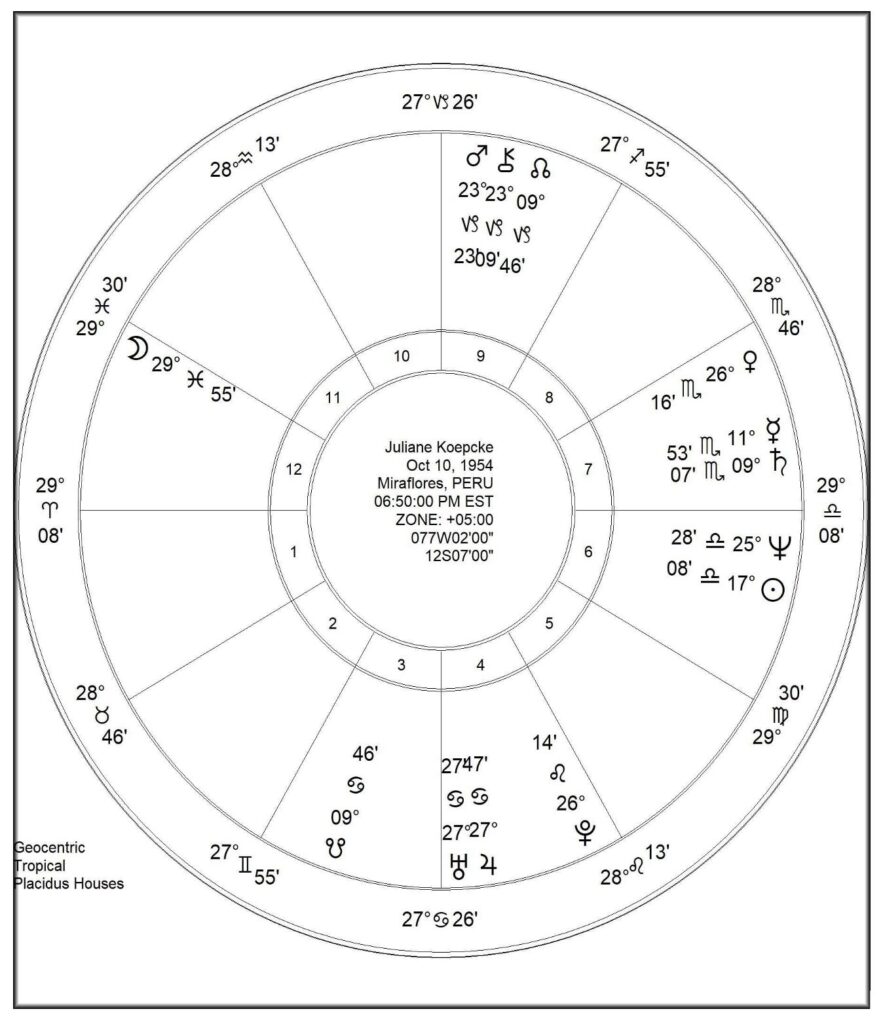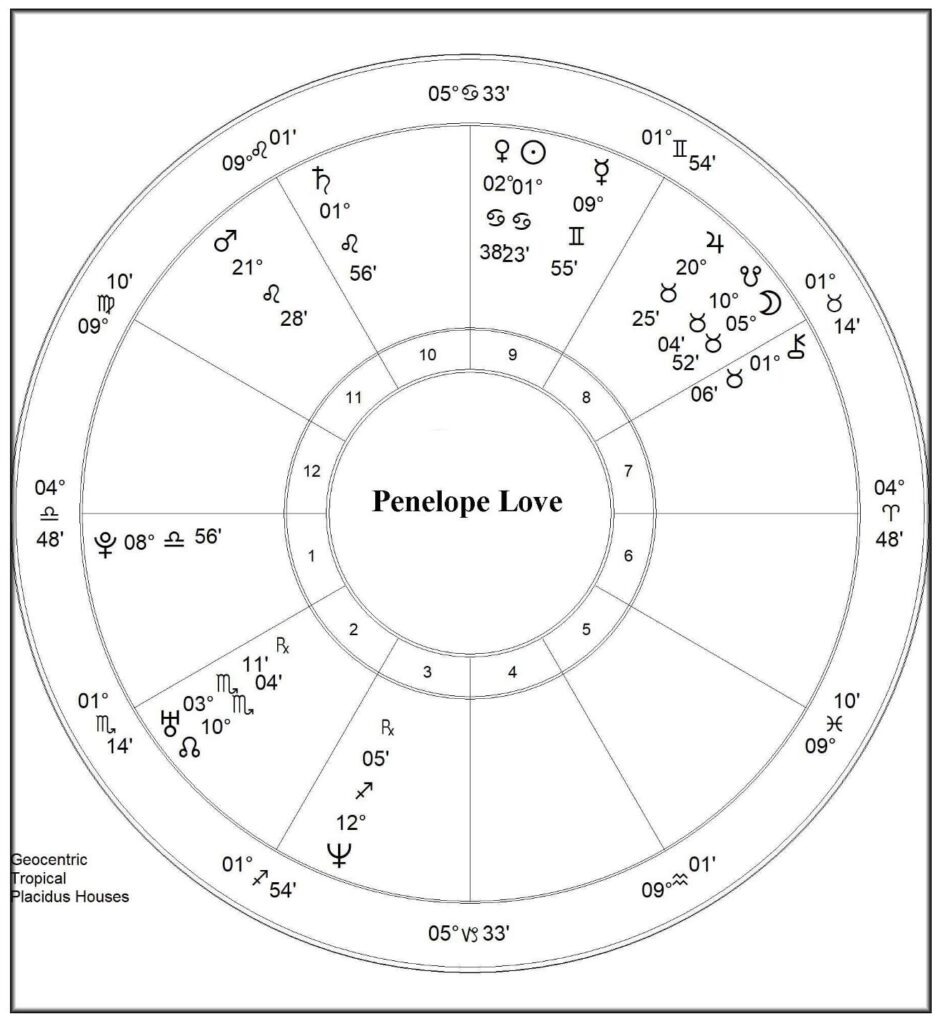What is Mutual Reception?
December
Master’s Musings, January 2025
What is Mutual Reception?
0:00
/
0:00
Master’s Musings
In your astrological studies, you’ll occasionally encounter the term “mutual reception.” I don’t think I’ve ever written about it before, but I suspect it may have popped up from time to time in my videos or in one of our question-and-answer sessions. It’s not a pivotal tool in evolutionary astrology, but it’s something worth understanding.
The basic idea is the soul of simplicity: we have two planets and each one lies in the sign that the other one rules. You might, for example, have Mercury in Aries and Mars in Gemini. Or maybe your Jupiter is in Cancer while the Moon is in Sagittarius. Even though every planet is different, in the case of mutual reception, each one is wired to have a special understanding of the other one. They are working as a team.
A common interpretive thread in the traditions around mutual reception is that these planets can help each other escape from various perils. They watch out for each other. They have each other’s backs. They can “bail each other out.” They can offer each other “escape hatches.”
Those phrases give us the basic interpretive template. Mercury in Aries and Mars in Gemini? Maybe your shoot-from-the-hip Mercury gets you into trouble – you say something injudicious and suddenly everyone is giving you dirty looks. Mars-in-Gemini to the rescue – you quickly come up with a “clarification” that gets you off the hook.
Jupiter in Cancer and the Moon in Sagittarius? Maybe you’re worried about how you’re going to pay for that fixer-upper home you just bought in Calabria, Italy? (There’s your impulsive Moon in Sagittarius.) Right on schedule, your grandmother dies and leaves you half a million dollars. (Jupiter in Cancer to the rescue.)
Once I read that you can think of two planets in mutual reception the same way you might think of a trine aspect between them. That’s a crude analogy, but it does contain a germ of truth –. clearly the simple notion of “luck” has some relevance here. But naturally it’s possible for two planets in mutual reception to be joined by a hard aspect, so it’s a bit more complicated than thinking of them as “trine.” The classic example there would be Mars in Libra opposing Venus in Aries. Here’s another – Jupiter in Virgo in square aspect to Mercury in Sagittarius. In those cases, we’re obviously dealing with some complexity – the integrative challenges of the hard aspect are mixed with themes of alliance, mutual aid, and shared goals and understandings.
JULIANE KOEPCKE
Here’s a real life story of a woman born with Saturn in Scorpio and Mars in Capricorn – a classic example of mutual reception. She’s also on the short list for the luckiest human being ever to have lived. On Christmas Eve 1971, the plane in which she was flying with her mother in South America was struck by lightning and disintegrated in midair. Still strapped to her seat, she fell 10,000 feet and crashed into the Amazon rainforest far below, miraculously still alive. She was the sole survivor of the crash, suffering a concussion, a broken collar bone, and various lacerations.
Following creeks and rivers downstream, she wandered through the jungle for nine days before finding a camp set up by lumberjacks who finally got her to help. Two weeks later, she was strong enough to be able to help authorities locate the crash site, where she had the horrific experience of finding her own mother’s body.
Obviously, there is considerable ambiguity in calling Juliane Koepcke “lucky.” Still, there are not many human beings who can fall from a height of nearly two miles and live to tell the tale. Google her if you’d like to know the rest of her story.
Meanwhile, here’s her AA-rated chart.

There’s a clear mutual reception between Mars and Saturn, in Capricorn and Scorpio respectively. The interpretive details are truly eerie and they verge us a lot closer to fortune-telling astrology than where we usually go in our work. Keep perspective: I am sure that there are thousands of people who have “malefic” Mars in “the house of long journeys” and who have never fallen out of airplanes – even if Mars not only rules their charts, but is also conjunct Chiron, opposing a Uranus/Jupiter conjunction, and squared by Neptune!
The astrological symbolism behind Koepcke’s spectacular accident is clearly quite literal in this case: she had a horrible accident (Mars) on a “long journey” (9th house) and miraculously (mutual reception) survived. As always, astrology works – we’re just never sure exactly how it’s going to work. And naturally in exploring this single event, while the correlations are indeed extremely striking and obvious, we are far from seeing the “only” meaning these configurations could possibly have had – or actually have had in her life. Any astrologer who looks at her chart and tries to play the “I could have told you that” game is standing on very shaky ground.
Our focus here is on understanding mutual reception in generalizable ways. How does Koepcke’s Mars interact with her 7th house Saturn in Scorpio, along with Saturn’s solid conjunction with Mercury? To really get to the heart of the matter, that’s the technical question we need to answer. Here’s a critical piece of background information – something which opens the door to understanding the cooperative interaction between her Mars and her Saturn. When she was born, Juliane Koepcke’s parents were German zoologists working at the Museum of Natural History in Lima, Peru. When Juliane was fourteen, they left Lima to create a research facility deep in the Amazon rainforest, where she learned jungle survival skills. Without those skills, it is doubtful that she would have gotten through her rainforest trek alive.
When we think of survival, what astrological symbolism comes to mind? Scorpio resonates with the presence of death. Mars resonates with the fierce desire to fight to remain alive. Saturn resonates with sheer determination in the face of daunting difficulties.
And Mercury resonates with knowledge.
In those last few sentences, we see the stew of astrological energies that kept Juliane Koepcke alive. She needed the sheer grit of Mars and Saturn, but without her technical “Mercury” knowledge about survival skills specific to the perils of the Amazon basin, she wouldn’t have made it through in one piece.
Still, the obvious question remains: what kept her alive as she fell 10,000 feet to the jungle floor far below? No amount of knowledge prepares anyone to survive such a trauma. That part is not so easy to explain – and in that we perhaps glimpse the deeper mysteries implicit in mutual reception.
It seems that guardian angels find mutual receptions attractive.
Juliane Koepcke’s example is obviously a “Perfect Ten” on the Richter Scale of drama. That’s fitting with Mars, Saturn, and Scorpio in the mixture. Let’s now turn our attention to a softer example – one that’s closer to the more psychological realities that you’ll actually encounter in the course of pursuing an astrological practice in the everyday world. Here we’ll stick nearer to home. Let’s look at the chart of the FCEA’s beloved Communications Director . . .
PENELOPE LOVE
With Penelope, we are looking at a very powerful example of mutual reception, but one that isn’t quite so chocked full of hellfire and brimstone as Koepcke’s. Penelope’s chart-ruling Venus lies in Cancer and conjunct her Sun – she’s clearly Madame Venus. Meanwhile, her Moon lies in Taurus. That provides us with a classic example of mutual reception: the Moon is in a sign that Venus rules while Venus occupies the Moon’s own sign, Cancer.

Intimate themes clearly pervade Penelope’s mutual reception. Venus is of course “the goddess of love” and it could hardly be more prominent in her chart. Being in Cancer, Venus definitely takes on the coloration of “wife” and “life-partner” – in terms of relationship, Cancer means that we’re talking about serious commitment for the long haul. That stable, monogamous intention is further underscored by the Moon being in the Fixed sign, Taurus. More to the point, the Moon is also in the 8th house, which links directly to the idea of sexual bonding as distinct from any examples of the broader range of human sexual expression. With Penelope’s symbols, we’re talking about the mystery of couples who pass the test of time. God bless our flings and our adventures on either side of the bedsheets, but those kinds of amorous situations are more in the 5th house category than the 8th. Penelope’s evolutionary intention in this lifetime very definitely includes the experience of serious commitment running in both directions – to cherish and to be cherished.
Here’s the hitch: her 8th house Taurus Moon is in a conjunction with her south node, which is in turn ruled by that same Venus. In Penelope’s case, this whole mutual reception structure is pervaded by unresolved intimate karma – and note that “earthquaking” Uranus opposes both the south node and the Moon. That configuration is strongly suggestive of past life bereavement or abandonment – something that left her with a bit of PTSD in the love department as she began this incarnation.
Would that mutual reception of Venus and the Moon come to the rescue in this lifetime?
Rather than telling you Penelope’s story here, let me just refer you to her book, Wake Up In Love. In fact, you can enter it in Amazon’s search engine right now and read a few pages for free. There, you’ll see the heart of the matter in action – and I bet you’ll quickly want to buy the book too! Support your local Communications Director!
Steven Forrest
January 2025
